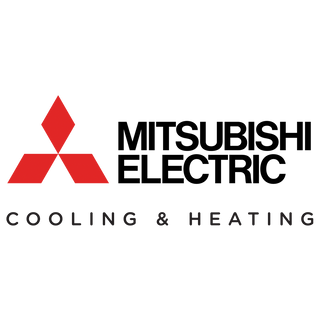
Mitsubishi Electric
Overview
Milestones Timeline
History
From industrial motors to modern heat pumps. Mitsubishi Electric began in 1921 with electric motors and heavy industry, building a reputation for precision engineering and controls. Those strengths later shaped the company’s approach to comfort systems—treating compressors and fans as elements in a finely tuned, variable-speed control loop rather than simple on/off machines.
Shizuoka Works and a wave of innovation. Dedicated air-conditioning production at Shizuoka Works (1954) kicked off decades of R&D milestones. In 1968, the brand popularized a wall unit with a cross-flow fan, enabling quiet operation in a compact chassis. By 1978, “Mr. Slim” made ductless mini-splits a practical option for room-by-room comfort—no major ductwork required, faster installs, and zoning that reduced wasted energy.
Scaling to buildings with CITY MULTI (VRF). In 1984, Mitsubishi Electric launched CITY MULTI, a flagship variable refrigerant flow platform built around inverter control and heat recovery. Longer line lengths, simultaneous heating/cooling, and smart valves allowed designers to condition complex buildings with fewer shafts and less disruption—especially valuable in schools, hotels, and phased retrofits.
Owning the core: compressors and supply chain. With Siam Compressor Industry (1988) and an expanded manufacturing footprint, the brand tightened quality control and availability of the components that matter most. That vertical integration shows up in the field as quieter outdoor units, better low-load modulation, and reliability for long service lives when systems are sized and commissioned correctly.
Cold-climate credibility. A common heat-pump critique used to be winter performance. Mitsubishi Electric’s Hyper-Heating INVERTER® (H2i) attacked that head-on, maintaining usable capacity at low outdoor temperatures and making primary all-electric heating realistic in many northern markets—especially in tight, well-designed homes and multifamily projects focused on decarbonization.
METUS: scale for the U.S. market. In 2018, Mitsubishi Electric and Trane Technologies formed Mitsubishi Electric Trane HVAC US (METUS). The joint venture pairs deep ductless/VRF technology with nationwide distribution, training, and support. For contractors, that means product availability, design assistance, and the Diamond Contractor® network for installation and service best practices.
Lower-GWP refrigerants and next-gen control. As the industry transitions from R-410A, Mitsubishi Electric has led with lower-GWP platforms and continues to invest in controls that minimize energy use while stabilizing room temperature and sound levels. The brand’s through-line is consistent: apply high-end control theory to practical, good-looking systems that quietly do the job in homes and high-performance buildings alike.
Why buy Mitsubishi Electric
Four manufacturer-backed advantages that matter in the real world.
Room-by-room zoning
Condition spaces individually—ideal for additions, retrofits, mixed-use floorplans.
Cold-weather heat
H2i® maintains usable capacity at low temps—primary heat in many northern homes.
Quiet, efficient inverter
Variable-speed compressors match load for efficiency, low sound, and steady comfort.
Diamond Contractor® support
Access trained pros; strong warranties—often up to 12-year parts/compressor with registration.
Warranty terms vary by model and registration. See official policies for specifics.
Mitsubishi Electric — How Heat Pumps Work
Mitsubishi Electric Support & Tools
Coverage details and terms by product family; Diamond Contractor® installs may extend coverage.
Register to activate eligible extended coverage and keep records handy for service.
Technical docs, submittals, wiring & service literature via MyLinkDrive.





